They worked with what they could. And they struggled to marshall the right — and sufficient — resources for the right purpose at the right time… to save the national memory, the codified expression and history of the national soul — and it still wasn’t enough. As happens more and more often, it seems.
I refer, of course, to the devastating, agonizing loss of the Brazilian National Museum to a fire that, by most accounts, could have been prevented — in an ideal world.
But let’s not look at that loss in the framework of how the improbable (the fire) became, over more than a generation of neglect and insufficient resources, an almost certainty. Because even the timeframe spanning a generation or two is a myopic angle of view when we’re talking about the time spans of civilizations — let alone planets.
Instead we should see that terrible loss, statistically speaking, as the far right end of a probability curve that ramps slowly but inexorably upward toward near-certainty. Seen over a sufficient timeline, the loss of that gorgeous old gem of the museum in Rio was not an anomaly — it was predictable as part of a probability curve, a trend, that will most likely ultimately, over enough time, engulf the vast majority of everything that humanity has yet built.
I believe that humanity will survive forever. In one form or another. That’s part of what we’re fighting for at Arc/k. But the physical things we have built are all facing terrible, maybe even insurmountable odds when you look at the big picture of time itself.
But data can survive. Memory can survive. Knowledge and wisdom and the richness of human diversity can thrive even in the face of overwhelming material destruction. We can continue to learn from, and be enriched by, our past even as it fades, or is torn, from physical existence.
The lesson, dark and dire as it sounds, is actually not at all pessimistic. Sure, as they say, “all things shall come to pass”…. but the human collective memory can step outside that cruel dynamic. The beauty that we as humanity create CAN be immortal.
Archive. Archive everything that matters to you, whether you’re an individual, a group or a vast, well-endowed institution… but do it now. Because over enough time, disaster, of one kind or another, is a certainty — it’s not an anomaly.
Hey: How’s that for holiday cheer?!
For a bit of that, read on, dear reader — because there’s actually an awful lot to be cheerful about! (I promise!)
Best,
b r i a n p o p e
Founder & Executive Director
Our Efforts in Venezuela
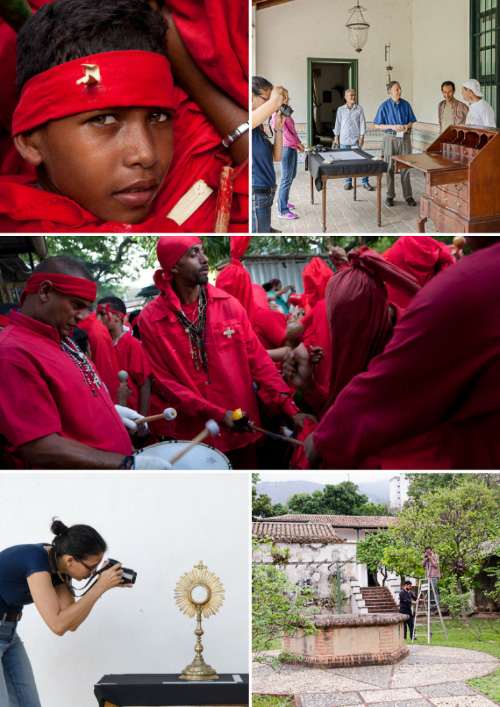
All photos credit to Luis Chacín, Gustavo Marcano, and Gustavo Duarte.
We are so grateful & thrilled that we were able to raise $7450 toward our efforts in Venezuela. Thanks to all who donated, shared the campaign, or supported us in any way! Our campaign is now ongoing.
Thanks to these funds, we’ve been able to begin all of our new projects, including:
• San Rafael de Mucuchíes Stone Chapel
• Quinta de Anauco
• Museo de Arte Contemporáneo del Zulia
• El Calvario barrio
• And much more!
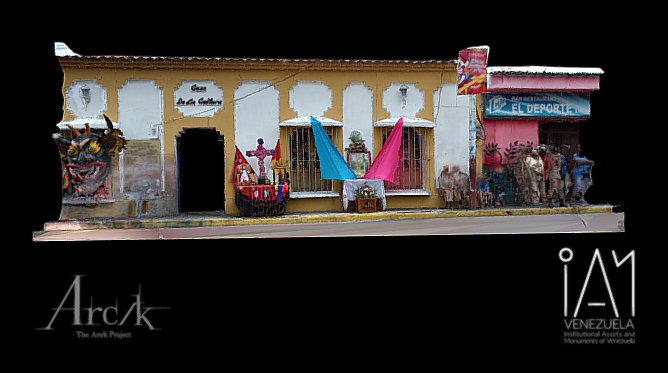
Part of the Dancing Devils procession. Yare State, Venezuela. Photo registry by Luis Chacín, Luis Duarte, and Gustavo Marcano.
See it on Sketchfab here.
By José Francisco Rodríguez (late 18th century). Located at the Colonial Art Museum at Anauco House in Caracas. Photo registry by Daniel Santos in April 2018.
See it on Sketchfab here.


By José Francisco Rodríguez (late 18th century). Located at the Colonial Art Museum at Anauco House in Caracas. Photo registry by Daniel Santos in April 2018.
See it on Sketchfab here.

The historic Colonial Art Museum in Caracas. Photo registry by Manuel Lara, Félíx León, Manuel Ochoa, Douglas Segovia, Luis Chacín, Nicolás Serrano, Oscar Uzcátegui, Bethany Briceño, Elena Cardona.
See it on Sketchfab here.
Spotlight:
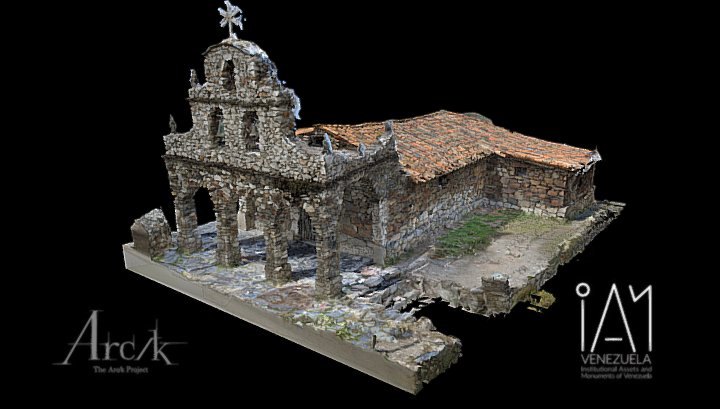 San Rafael de Mucuchíes Chapel
San Rafael de Mucuchíes Chapel
Stone Chapel (1984), by Juan Félix Sánchez, Venezuelan artist. Located in San Rafael de Mucuchíes, Mérida state, Venezuela. Photo registry by Marinela Araque Rivero and Samuel Hurtado Camargo.
This chapel shows a unique method of construction developed by Sánchez, an artist who had no formal studies. He built it stacking local stones according to their shape and color, without any finishing. The artist and his partner, Epifania Gil, are buried under this chapel.
This historic piece of Venezuelan artwork and architecture is currently at risk from tourists stealing stones from the chapel facade. It is our hope that we can develop an interactive experience of the chapel in which tourists can instead “take” virtual stones from the building, while learning about its history and significance. We are currently working on newer, cleaner iterations of the chapel, and can’t wait to share the finished product!
San Rafael de Mucuchíes Chapel
Stone Chapel (1984), by Juan Félix Sánchez, Venezuelan artist. Located in San Rafael de Mucuchíes, Mérida state, Venezuela. Photo registry by Marinela Araque Rivero and Samuel Hurtado Camargo.
This chapel shows a unique method of construction developed by Sánchez, an artist who had no formal studies. He built it stacking local stones according to their shape and color, without any finishing. The artist and his partner, Epifania Gil, are buried under this chapel.
This historic piece of Venezuelan artwork and architecture is currently at risk from tourists stealing stones from the chapel facade. It is our hope that we can develop an interactive experience of the chapel in which tourists can instead “take” virtual stones from the building, while learning about its history and significance. We are currently working on newer, cleaner iterations of the chapel, and can’t wait to share the finished product!

Upcoming Syria Initiatives
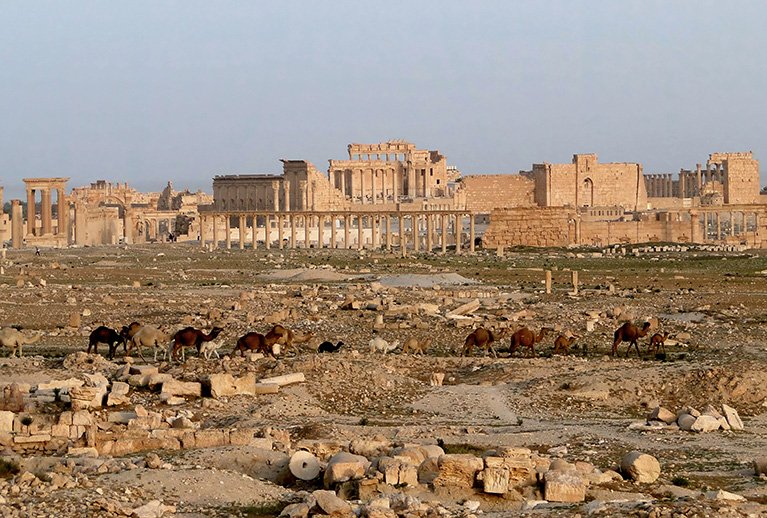 In 2019, we’ll begin working on three new digital cultural preservation initiatives in Syria:
In 2019, we’ll begin working on three new digital cultural preservation initiatives in Syria:
1. Dead Cities (pictured left) — This extensive region of stone structures in north-western Syria is a UNESCO world heritage site. Containing over 700 stone buildings in various states of decay from Late Antiquity, this area is ideal for drone photogrammetry mixed with photogrammetry of specific structures for detail.
2. Ma’ara Museum — A possible portable LIDAR and photogrammetry combination will be used to achieve high quality structural and textural data to share with an engineer off-site to determine the best way to shore up this museum temporarily until resources can be found for a more permanent restoration. This museum is full of priceless mosaics so the integrity of the building is essential from not only an architectural preservation perspective, but an art preservation perspective as well.
 3. Krak des Chevaliers (pictured right) — This UNESCO world heritage site was a 12th century Crusader era castle that was damaged during the Syrian Civil War. Because of the nature of this well-known site Arc/k hopes to do crowdsourced photogrammetry of the castle prior to the destruction (using academic and tourist photos) as well as on-the-ground detailed photogrammetry of the present-day site. The hope is that this can aid any future restoration project at the location and also be a digital witness to the damage that was inflicted by the war.
3. Krak des Chevaliers (pictured right) — This UNESCO world heritage site was a 12th century Crusader era castle that was damaged during the Syrian Civil War. Because of the nature of this well-known site Arc/k hopes to do crowdsourced photogrammetry of the castle prior to the destruction (using academic and tourist photos) as well as on-the-ground detailed photogrammetry of the present-day site. The hope is that this can aid any future restoration project at the location and also be a digital witness to the damage that was inflicted by the war.
In 2019, we’ll begin working on three new digital cultural preservation initiatives in Syria:

1. Dead Cities (pictured above) — This extensive region of stone structures in north-western Syria is a UNESCO world heritage site. Containing over 700 stone buildings in various states of decay from Late Antiquity, this area is ideal for drone photogrammetry mixed with photogrammetry of specific structures for detail.
2. Ma’ara Museum — A possible portable LIDAR and photogrammetry combination will be used to achieve high quality structural and textural data to share with an engineer off-site to determine the best way to shore up this museum temporarily until resources can be found for a more permanent restoration. This museum is full of priceless mosaics so the integrity of the building is essential from not only an architectural preservation perspective, but an art preservation perspective as well.

3. Krak des Chevaliers (pictured above) — This UNESCO world heritage site was a 12th century Crusader era castle that was damaged during the Syrian Civil War. Because of the nature of this well-known site Arc/k hopes to do crowdsourced photogrammetry of the castle prior to the destruction (using academic and tourist photos) as well as on-the-ground detailed photogrammetry of the present-day site. The hope is that this can aid any future restoration project at the location and also be a digital witness to the damage that was inflicted by the war.
TK Labels
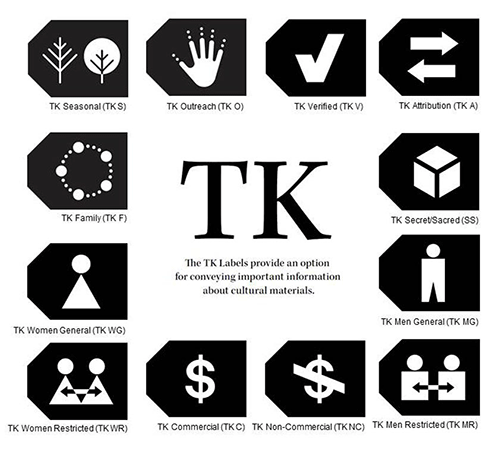 The Arc/k Project is committed to ethical and collaborative relationships with Indigenous communities. In this endeavor, we seek to understand and accommodate alternative ways of organizing knowledge held by these communities in our archival practices. Fortunately, some important work has been done in this area via federal grant programs which have encouraged Indigenous communities to partner with academics and archival professionals in the creation of policies and practices which respect cultural protocols.
The Arc/k Project is committed to ethical and collaborative relationships with Indigenous communities. In this endeavor, we seek to understand and accommodate alternative ways of organizing knowledge held by these communities in our archival practices. Fortunately, some important work has been done in this area via federal grant programs which have encouraged Indigenous communities to partner with academics and archival professionals in the creation of policies and practices which respect cultural protocols.
One of these partnerships, Local Contexts, has sought to address the challenges Indigenous communities face in the management of their cultural heritage and intellectual property – specifically within the digital environment – through the use of Traditional Knowledge (or TK) Labels. TK Labels offer Indigenous communities the ability to add cultural and historical context to their cultural heritage content. Additionally, TK Labels can give tribes intellectual control beyond the limits of current intellectual property options by offering culturally specific protocols for access and use.
As part of our new upcoming catalog, we are excited to announce that we will offer TK Labels in support of a new paradigm which gives Indigenous communities more intellectual control over their own cultural heritage.
Learn more about Local Contexts and TK Labels at localcontexts.org
The Arc/k Project is committed to ethical and collaborative relationships with Indigenous communities. In this endeavor, we seek to understand and accommodate alternative ways of organizing knowledge held by these communities in our archival practices. Fortunately, some important work has been done in this area via federal grant programs which have encouraged Indigenous communities to partner with academics and archival professionals in the creation of policies and practices which respect cultural protocols.

One of these partnerships, Local Contexts, has sought to address the challenges Indigenous communities face in the management of their cultural heritage and intellectual property – specifically within the digital environment – through the use of Traditional Knowledge (or TK) Labels. TK Labels offer Indigenous communities the ability to add cultural and historical context to their cultural heritage content. Additionally, TK Labels can give tribes intellectual control beyond the limits of current intellectual property options by offering culturally specific protocols for access and use.
As part of our new upcoming catalog, we are excited to announce that we will offer TK Labels in support of a new paradigm which gives Indigenous communities more intellectual control over their own cultural heritage.
Learn more about Local Contexts and TK Labels at localcontexts.org
